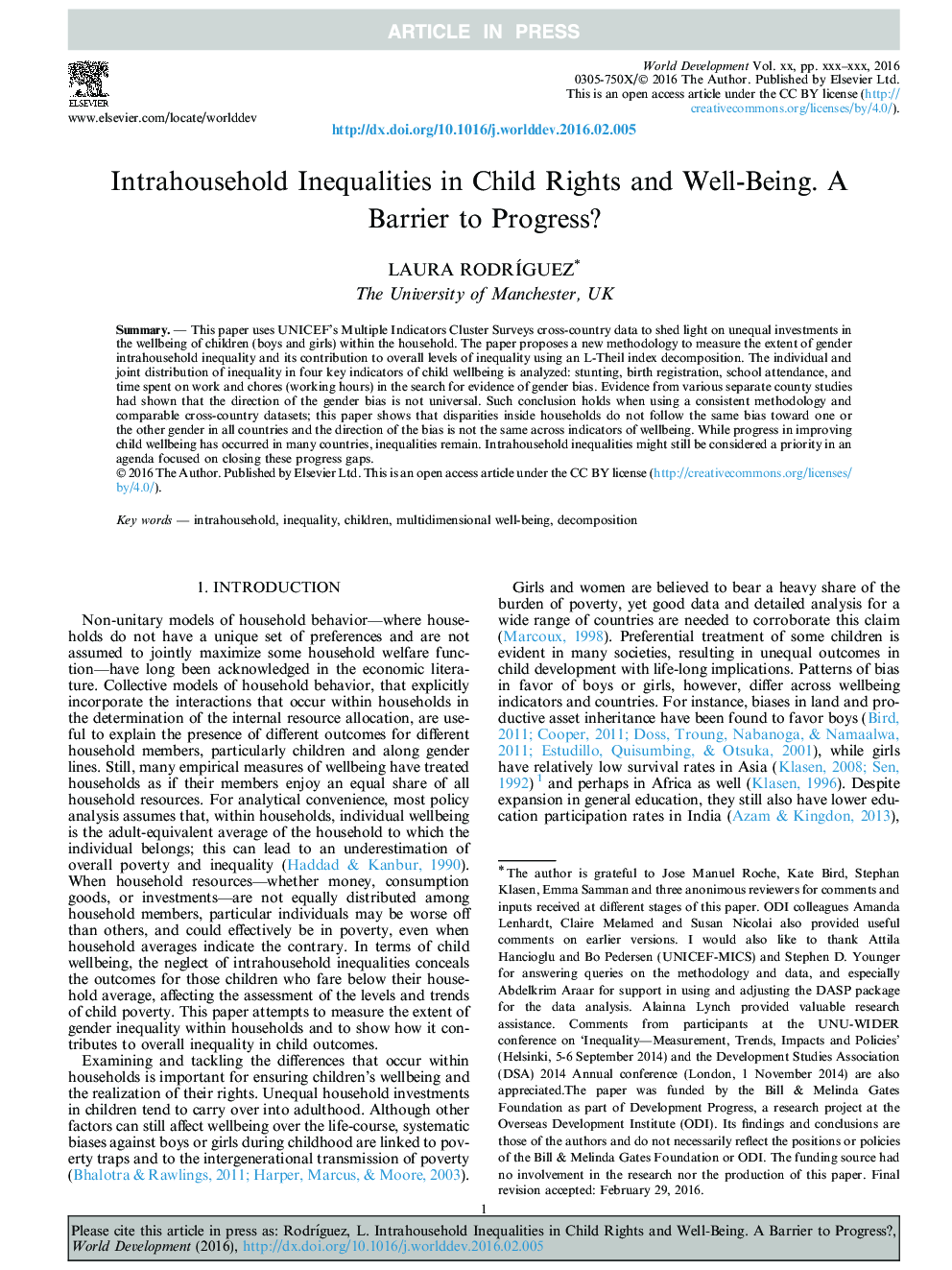| Article ID | Journal | Published Year | Pages | File Type |
|---|---|---|---|---|
| 7392687 | World Development | 2016 | 24 Pages |
Abstract
This paper uses UNICEF's Multiple Indicators Cluster Surveys cross-country data to shed light on unequal investments in the wellbeing of children (boys and girls) within the household. The paper proposes a new methodology to measure the extent of gender intrahousehold inequality and its contribution to overall levels of inequality using an L-Theil index decomposition. The individual and joint distribution of inequality in four key indicators of child wellbeing is analyzed: stunting, birth registration, school attendance, and time spent on work and chores (working hours) in the search for evidence of gender bias. Evidence from various separate county studies had shown that the direction of the gender bias is not universal. Such conclusion holds when using a consistent methodology and comparable cross-country datasets; this paper shows that disparities inside households do not follow the same bias toward one or the other gender in all countries and the direction of the bias is not the same across indicators of wellbeing. While progress in improving child wellbeing has occurred in many countries, inequalities remain. Intrahousehold inequalities might still be considered a priority in an agenda focused on closing these progress gaps.
Related Topics
Social Sciences and Humanities
Economics, Econometrics and Finance
Economics and Econometrics
Authors
Laura RodrÃguez,
